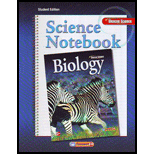
Concept explainers
Introduction :
Paramecium is a type of protozoa. Protozoa are animal-like protists that follow a heterotrophic mode of nutrition and are thus characterized as heterotrophs. Protozoans generally ingest other protozoans, algae, and bacteria to obtain energy and nutrition.
Answer to Problem 5MI

Explanation of Solution
1) Anal pore: It is an opening at the rear end of paramecium. The anal pore is used by the paramecium to get rid of waste material.
2) Cilia. Cilia are tiny hair structure present on the body of a paramecium. It is generally present in many numbers and in paramecium, these structures cover the whole body of the organism. Cilia help in locomotion and in capturing and internalizing the prey.
3) Contractile vacuole. The contractile vacuole is specifically helpful for aquatic organisms in maintaining homeostasis or water balance in their body. The vacuole collects the excess water present in the body of the organism (generally unicellular) or the cytoplasm and then expels it outside the body or cell. The vacuole may also contain some waste products that also get expelled out along with water. Paramecium has two contractile vacuoles.
4) Ectoplasm: It is the outer portion of the cytoplasm that is located near the cell membrane of the paramecium. The consistency of ectoplasm differs from that of the endoplasm. Ectoplasm helps in the pseudopod formation and the food ingestion
5) Gullet: Gullet is the buccal cavity present next to the oral groove in paramecium. From the gullet, the food passes into the cell interior and then into the food vacuole to be digested and then transported to the whole cell.
6) Micronucleus: It is one of the two nuclei present in the paramecium. Micronucleus is the germline nucleus that contains genetic information that is passed on from one generation to the next generation.
7) Macronucleus: It is the other nucleus present along with the micronucleus in the paramecium. Macronucleus controls the non-reproductive functions of the cell and expression of cells required for regular functioning.
8) Oral groove: The oral groove runs from the anterior to the midpoint of the cell. The oral groove is covered with cilia that beat continuously to move food inside the cell.
Chapter 19 Solutions
Biology Science Notebook
Additional Science Textbook Solutions
Genetic Analysis: An Integrated Approach (2nd Edition)
Becker's World of the Cell (9th Edition)
Campbell Biology (10th Edition)
Microbiology: An Introduction
Concepts of Genetics (12th Edition)
Campbell Biology: Concepts & Connections (9th Edition)
 Human Anatomy & Physiology (11th Edition)BiologyISBN:9780134580999Author:Elaine N. Marieb, Katja N. HoehnPublisher:PEARSON
Human Anatomy & Physiology (11th Edition)BiologyISBN:9780134580999Author:Elaine N. Marieb, Katja N. HoehnPublisher:PEARSON Biology 2eBiologyISBN:9781947172517Author:Matthew Douglas, Jung Choi, Mary Ann ClarkPublisher:OpenStax
Biology 2eBiologyISBN:9781947172517Author:Matthew Douglas, Jung Choi, Mary Ann ClarkPublisher:OpenStax Anatomy & PhysiologyBiologyISBN:9781259398629Author:McKinley, Michael P., O'loughlin, Valerie Dean, Bidle, Theresa StouterPublisher:Mcgraw Hill Education,
Anatomy & PhysiologyBiologyISBN:9781259398629Author:McKinley, Michael P., O'loughlin, Valerie Dean, Bidle, Theresa StouterPublisher:Mcgraw Hill Education, Molecular Biology of the Cell (Sixth Edition)BiologyISBN:9780815344322Author:Bruce Alberts, Alexander D. Johnson, Julian Lewis, David Morgan, Martin Raff, Keith Roberts, Peter WalterPublisher:W. W. Norton & Company
Molecular Biology of the Cell (Sixth Edition)BiologyISBN:9780815344322Author:Bruce Alberts, Alexander D. Johnson, Julian Lewis, David Morgan, Martin Raff, Keith Roberts, Peter WalterPublisher:W. W. Norton & Company Laboratory Manual For Human Anatomy & PhysiologyBiologyISBN:9781260159363Author:Martin, Terry R., Prentice-craver, CynthiaPublisher:McGraw-Hill Publishing Co.
Laboratory Manual For Human Anatomy & PhysiologyBiologyISBN:9781260159363Author:Martin, Terry R., Prentice-craver, CynthiaPublisher:McGraw-Hill Publishing Co. Inquiry Into Life (16th Edition)BiologyISBN:9781260231700Author:Sylvia S. Mader, Michael WindelspechtPublisher:McGraw Hill Education
Inquiry Into Life (16th Edition)BiologyISBN:9781260231700Author:Sylvia S. Mader, Michael WindelspechtPublisher:McGraw Hill Education





